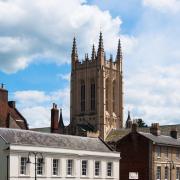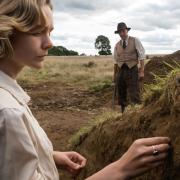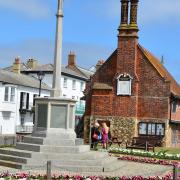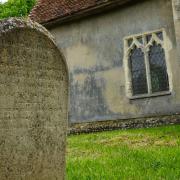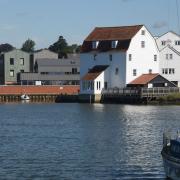Heather covered Dunwich Heath is a favourite haunt of walkers and tourists. David Falk, manager of Suffolk County Council’s Brandon Country Park, enjoys a glorious summer’s day on a circular walk

It’s a perfect summer day. After what feels like endless weeks of heavy rain, the sun has finally emerged. A blue sky sparkles. The air drifts fresh off the sea. It feels good to be outdoors.
I’m at Dunwich Heath, one of Suffolk’s tourism hot spots. In August the heath is a sea of purple, and after rain the heather scents the air. The heath sits in the heart of Suffolk’s coastline. From the cliff edge you get a sweeping view from Southwold with its lighthouse beacon in the north, to Sizewell, with its ice white dome, in the south. In between sit the triptych hotspots of Dunwich town, its glorious heath and RSPB Minsmere. They entice visitors from far and wide with seaside charm and natural riches.
Today I’m exploring a variety of landscapes from open heath to shingle beach to woodlands. I start at The National Trust’s famous coastguard cottages atop the cliffs. I wander down a gravel path towards the beach as a greenfinch rings out a peal. The sun beats down. This is proper summer.
At the beach I see fishermen inside conical tents, their lines stretched seaward. People dawdle at the water’s edge. Here, the sea is still, almost dead flat, just a gentle ripple reaching the shore. I head south.

Along the shore, vegetated sand dunes are studded with concrete tank traps that interrupt the route. The dunes provide elevated views into RSPB Minsmere and I take the opportunity to spy on its occupants – egrets, shelducks, oyster catchers, avocets, terns. The reserve is busy, a constant cycle of flying and feeding.
I watch a crowd of seagulls spooked into the air by a soaring marsh harrier. It glides over their nests, its head constantly peering for prey, before the gulls mob it. Their calls crescendo in victory, like cheering soldiers returning to camp.
The shingle shore itself is a mosaic of colour. Stocky green sea kale rubs against flowing blonde marrum grass. Upright, yellow horned poppies delicately flutter next to pastel-pink sea bindweed. It’s like a painter’s palette. A little further along the beach I reach the red brick structure of the sluice. This marks the southern extent of the reserve and I turn inland through a gate to follow a freshly mown footpath past shaggy long horned cattle and skimming swallows. The song of a cetti’s warbler pierces the air. An avocet flies overhead, sleek as a torpedo, a dart of black and white. Three mute swans occupy a pool far away from the madding seagulls. They drift as they feed, enjoying the relative peace on this side of the reserve.
The footpath passes a narrow stream beside a small wood of willow and ash. The trees provide welcome shade as a microclimate heats up and the air becomes humid. Lightweight midges bite me and heavy flies bug me. I step over puddles from the recent storms, leave the wood behind, and pass fields of potatoes and sugar beet before exiting onto a small track to a narrow lane.

The lane leads to the Eels Foot Inn, one of Suffolk’s best-known secrets. It’s a delight of an inn, a popular place to rest and on this walk, perfectly placed at the halfway point. I enjoy sitting under a blue Adnam’s umbrella, watching the world pass by as I rehydrate.
The second half of the walk is a stark contrast to the first. The Eels Foot disappears behind me as I walk along a tarmac lane past wet meadows into the dark shade of a lime tree avenue. I latch onto the waymarkers for the Sandlings Walk and delve deeper into woodland. The rich soil blends into soft sand and almost imperceptibly the land becomes hilly. I soon find myself on a rabbit filled hilltop, looking down onto Minsmere and out towards the distant sea beyond.
I saunter along soft tracks in cool shade. Patches of purple and cream foxgloves crowd in small clearings. They take advantage of their suntraps, soaking up the warmth. I’m soon soaking it up as well. Emerging out of woodlands I find myself back on Dunwich Heath and am nearing the end of my circular walk.
It’s even hotter on the heath. There are clear open skies and no shade. Compared to the coast, wet meadows and shady woodland it looks barren and feels wild. The heather forms a compact, tight textured mattress of green. Stunted trees poke through specks of purple. Redstarts flit between bushes. I pass birdwatchers and chat to fellow walkers. As I head back to the lifeguard cottages, I decide to enjoy the sun some more and spoil myself with a cream tea. Sitting at an outdoor table on a beautiful sunny afternoon, I look up and down the coastline and bask in the hot sun. This is bliss. It’s easy to see why Dunwich Heath is such a tourism hot spot.




